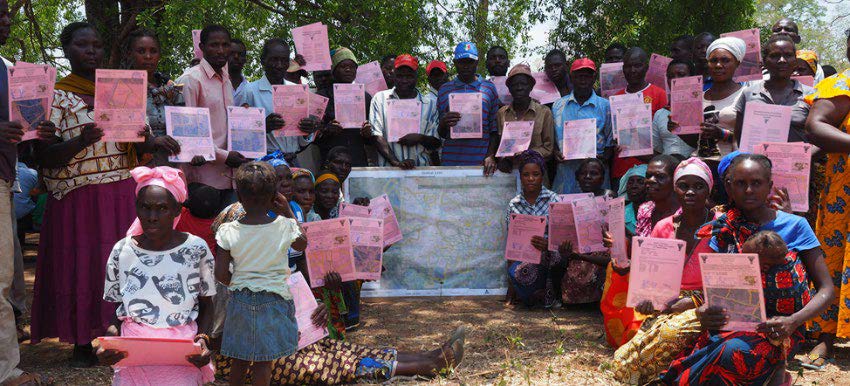INTEGRATED LAND AND RESOURCE GOVERNANCE TASK ORDER UNDER THE STRENGTHENING TENURE AND RESOURCE RIGHTS II (STARR II) IDIQ
Gender equality and women’s empowerment are core development objectives, fundamental to the realization of human rights, and key to effective and sustainable development outcomes. Unless both women and men are able to attain their social, economic, and political aspirations, and contribute to and shape decisions about the future, the global community will not successfully promote peace and prosperity. In line with United States Agency for International Development (USAID) gender compliance requirements,1 it is imperative that due attention is given to integration of issues of gender equality into USAID programs and projects.
 Over the past twenty years, development practitioners and researchers have become increasingly aware of the role that gender issues and inequities play in achieving effective land and resource rights and governance.3 Land remains a critical economic and social asset for women and men, particularly for those living in rural areas and dependent on agriculture or forests for livelihoods. Yet governance mechanisms for land and natural resources, whether part of a larger formal governance system or embedded in customary systems, often carry gender biases and may in some cases completely exclude women.4 Addressing gender issues lies at the heart of effective and inclusive land and resource governance; to not fully do so risks further enabling and empowering discriminatory systems, and undermining the effectiveness, uptake, and success of programmatic interventions.
Over the past twenty years, development practitioners and researchers have become increasingly aware of the role that gender issues and inequities play in achieving effective land and resource rights and governance.3 Land remains a critical economic and social asset for women and men, particularly for those living in rural areas and dependent on agriculture or forests for livelihoods. Yet governance mechanisms for land and natural resources, whether part of a larger formal governance system or embedded in customary systems, often carry gender biases and may in some cases completely exclude women.4 Addressing gender issues lies at the heart of effective and inclusive land and resource governance; to not fully do so risks further enabling and empowering discriminatory systems, and undermining the effectiveness, uptake, and success of programmatic interventions.
This strategy is intended as a working guide to integrate gender throughout the life span of the Integrated Land and Resource Governance (ILRG) task order under the Strengthening Tenure and Resource Rights II (STARR II) Indefinite Delivery/Indefinite Quantity (IDIQ) contract.5 The document provides a theoretical underpinning for gender integration in the program, and also serves as a practical tool kit for program implementation, offering links to an array of gender-based tools produced by USAID and others, suitable at different design, implementation and evaluation junctures.
The strategy contains four primary sections. The first provides linkages to the US Government’s Women’s Global Development and Prosperity (W-GDP) framework. The second section sets out key principles and working assumptions. The third section provides background, recommendations and references for specific approaches and activities, and is organized into design, implementation and monitoring/evaluation phases. The fourth and final section offers a guide to learning approaches and questions. Annex 1 contains a list of practical tools that could be considered in design and implementation of ILRG tasks and activities to help ensure gender responsive processes and outcomes. Annex 2 contains a table of resources by topic, and Annex 3 contains a list of references.
Preliminary note: To be useful, a gender strategy must be applicable by those who are not gender experts, and detailed enough to provide direction and guidance at different programmatic phases. One challenge to developing an initial gender strategy for ILRG is that much is still unknown about the goals, direction, and approaches of specific country-based activities that will take place under the project over the next three to five years. By design, ILRG is meant to be both expansive and flexible, encompassing an array of interventions. The breadth, flexibility, and early-program status of ILRG render it difficult to create a gender strategy with sufficient practical application. This strategy should serve as a starting point for developing more detailed gender-based analysis and inputs to the design, implementation, and evaluation of specific tasks as they emerge, as discussed below; it should not serve as a replacement for this process.

